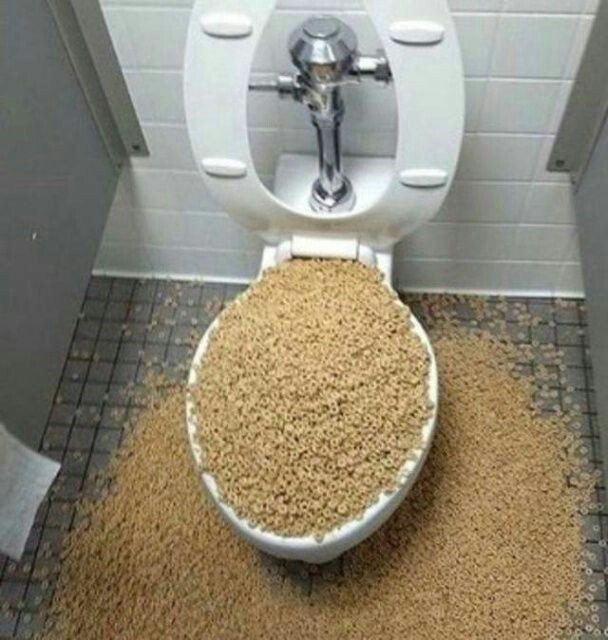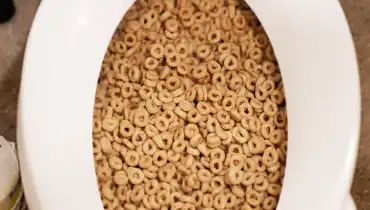Can One to Dispose of Food Waste in the Toilet?
Can One to Dispose of Food Waste in the Toilet?
Blog Article
We've unearthed this article about Flushing Food Down the Toilet? below on the net and thought it made sense to talk about it with you on this page.

Intro
Many people are commonly faced with the dilemma of what to do with food waste, especially when it pertains to leftovers or scraps. One typical concern that occurs is whether it's alright to purge food down the bathroom. In this article, we'll look into the reasons why people could consider purging food, the repercussions of doing so, and alternate methods for correct disposal.
Reasons people could consider flushing food
Absence of awareness
Some people might not be aware of the potential injury triggered by purging food down the toilet. They may incorrectly think that it's a safe practice.
Benefit
Flushing food down the bathroom may seem like a quick and easy solution to disposing of unwanted scraps, specifically when there's no nearby trash bin offered.
Negligence
Sometimes, people might simply pick to flush food out of sheer idleness, without taking into consideration the repercussions of their activities.
Repercussions of flushing food down the bathroom
Ecological influence
Food waste that ends up in waterways can contribute to air pollution and harm water environments. In addition, the water used to purge food can strain water sources.
Pipes concerns
Purging food can bring about blocked pipes and drains pipes, causing costly pipes repair work and aggravations.
Kinds of food that must not be purged
Fibrous foods
Foods with coarse textures such as celery or corn husks can get entangled in pipes and create obstructions.
Starchy foods
Starchy foods like pasta and rice can soak up water and swell, causing blockages in pipelines.
Oils and fats
Greasy foods like bacon or cooking oils should never be flushed down the bathroom as they can solidify and trigger clogs.
Appropriate disposal approaches for food waste
Using a waste disposal unit
For homes outfitted with waste disposal unit, food scraps can be ground up and flushed via the pipes system. However, not all foods appropriate for disposal in this fashion.
Recycling
Particular food product packaging products can be recycled, minimizing waste and reducing environmental effect.
Composting
Composting is an environmentally friendly method to take care of food waste. Organic products can be composted and utilized to enrich dirt for horticulture.
The relevance of appropriate waste administration
Reducing environmental damage
Appropriate waste administration methods, such as composting and recycling, assistance minimize air pollution and preserve natural deposits for future generations.
Safeguarding pipes systems
By preventing the method of flushing food down the commode, house owners can prevent costly plumbing repair services and maintain the stability of their pipes systems.
Verdict
In conclusion, while it may be appealing to flush food down the toilet for benefit, it is very important to understand the possible consequences of this action. By taking on correct waste administration practices and getting rid of food waste sensibly, people can contribute to healthier pipes systems and a cleaner atmosphere for all.
FLUSH FOOD DOWN THE TOILET?
FLUSHING FOOD CAN CAUSE BLOCKED DRAINS IN YOUR HOME
All of the plumbing fixtures in your home are connected to the same sewer pipe outside of your home. This outdoor sewer pipe is responsible for transporting all the wastewater from your home to the Council sewer mains. Even small pieces of food that go down the kitchen sink can cause problems for your sewer. It should therefore be obvious that flushing larger bits of food, such as meat, risks a clog in either the toilet itself or the sewer pipes. Flushing greasy food is even more problematic because oil coagulates when it cools, coating the interior lining of your pipes.
THE TOILET IS NOT A BIN
Food isn’t the only thing that people shouldn’t be flushing down the toilet. People use the toilet to dispose of all kinds of things such as tampons, makeup wipes, dental floss, kitty litter and even underwear. Water goes to great lengths to educate residents about the high costs and stress placed on wastewater treatment systems simply from people flushing the wrong stuff down the toilet. It costs taxpayers millions of dollars each year, and homeowners thousands in blocked drain repairs.
FLUSHING FOOD IS A WASTE OF WATER
Flushing food is a waste of our most precious resource - water. In June this year Level 1 water restrictions were introduced to protect water supply from drought conditions. Much of New South Wales continues to be affected by prolonged drought with recent figures revealing up to 97 per cent of the state remains in drought. Depending on whether you have a single or dual flush toilet, every single flush uses between five and 11 litres of water. In the current climate this is a huge amount of water to be wasting on flushing food that should be placed in the bin (or better yet, the compost).
https://www.jabplumbingsolutions.com.au/blog/can-you-flush-food-down-the-toilet

We hope you enjoyed reading our topic on Flushing Food Down the Toilet?. Many thanks for spending some time to read through our blog post. Do you know another individual who is fascinated with the topic? Feel free to promote it. Kudos for being here. Kindly pay a visit to our website back soon.
Call Today Report this page